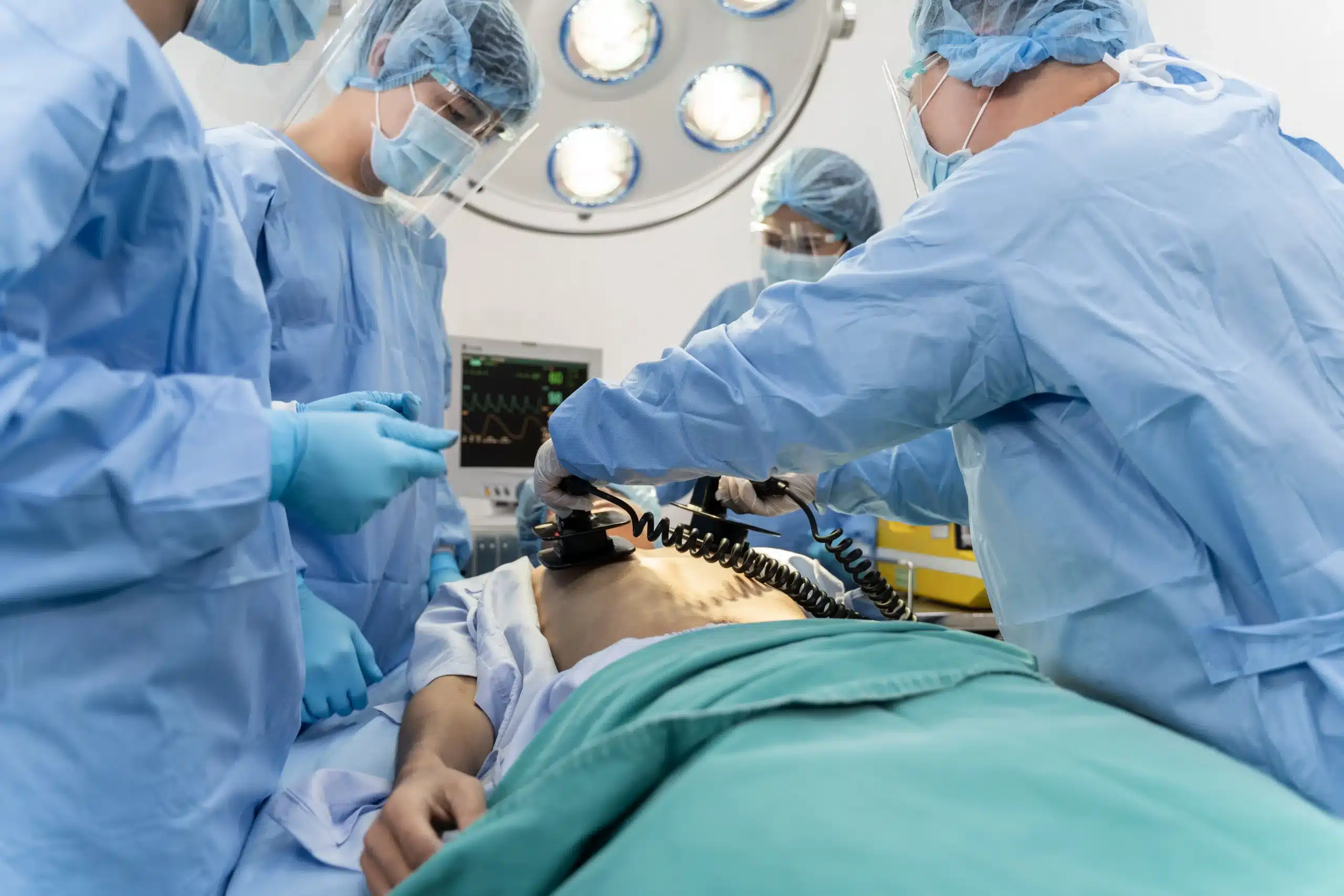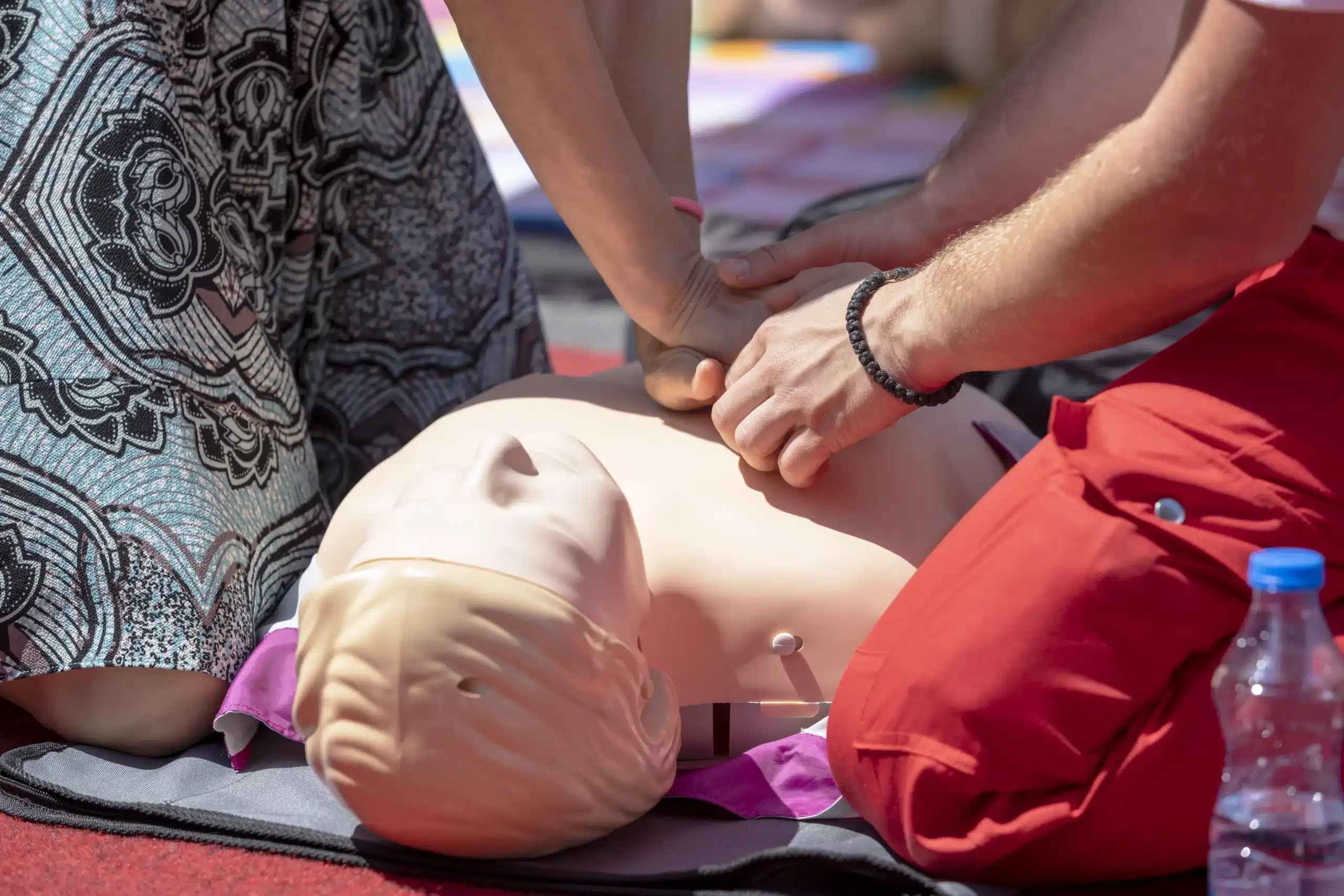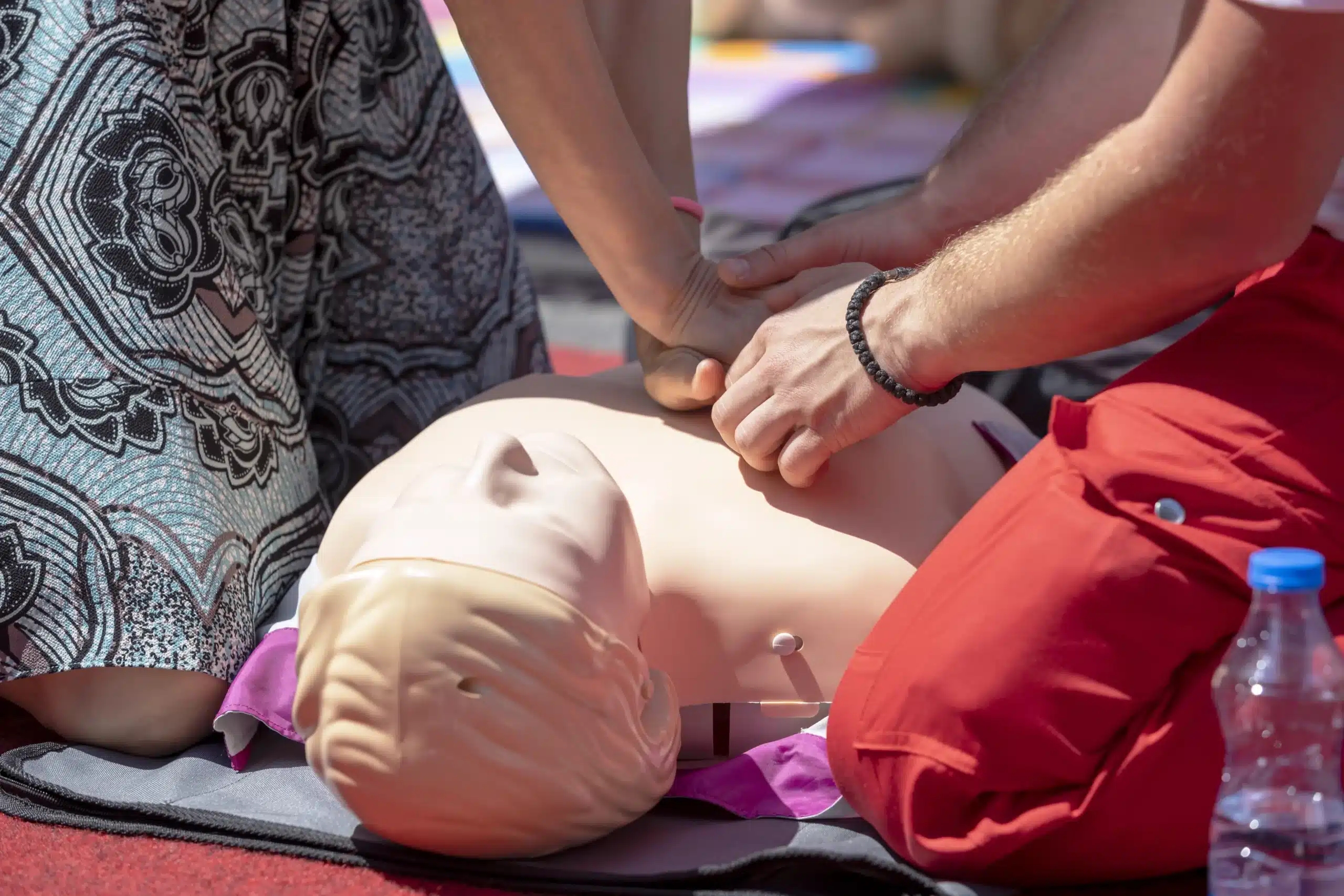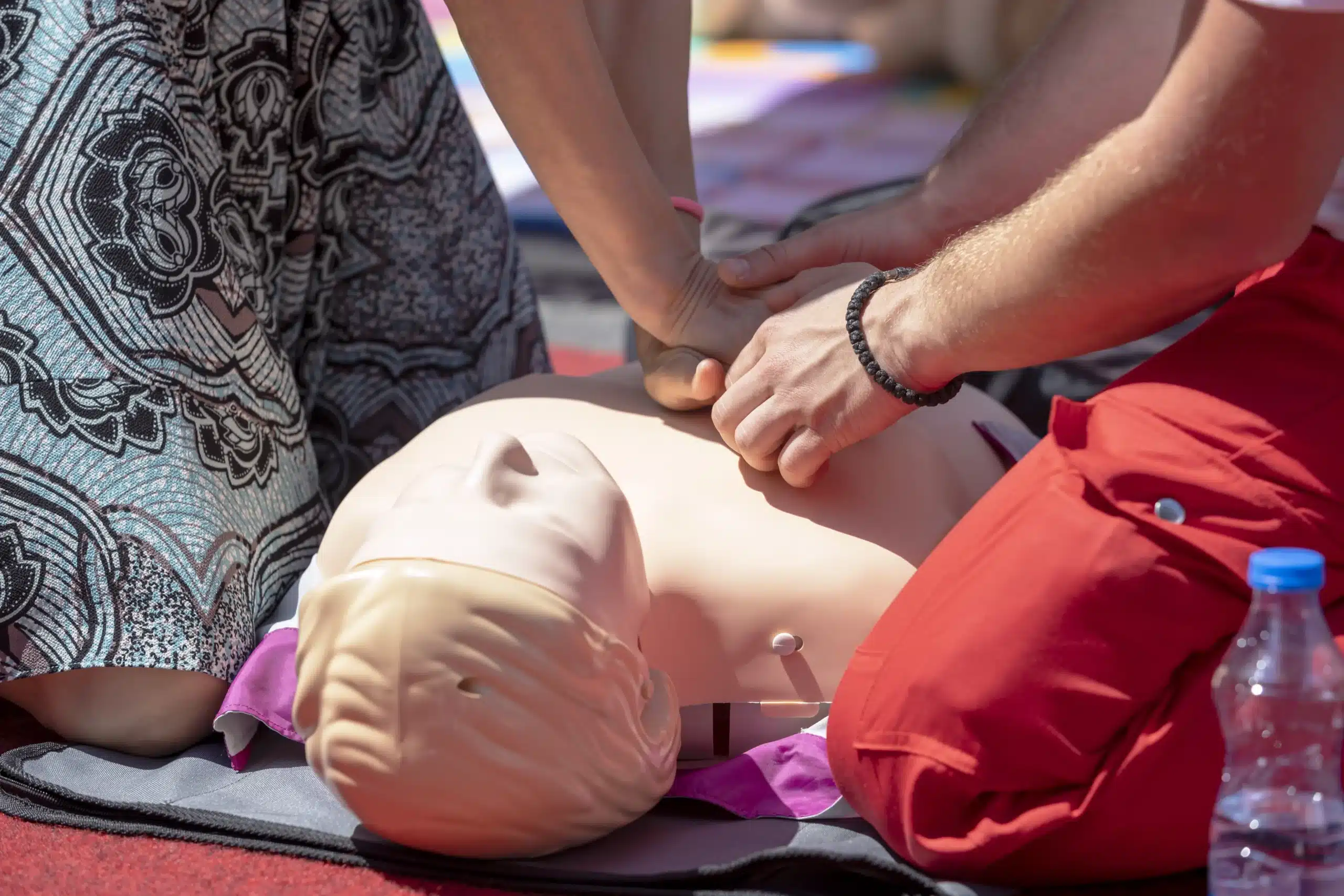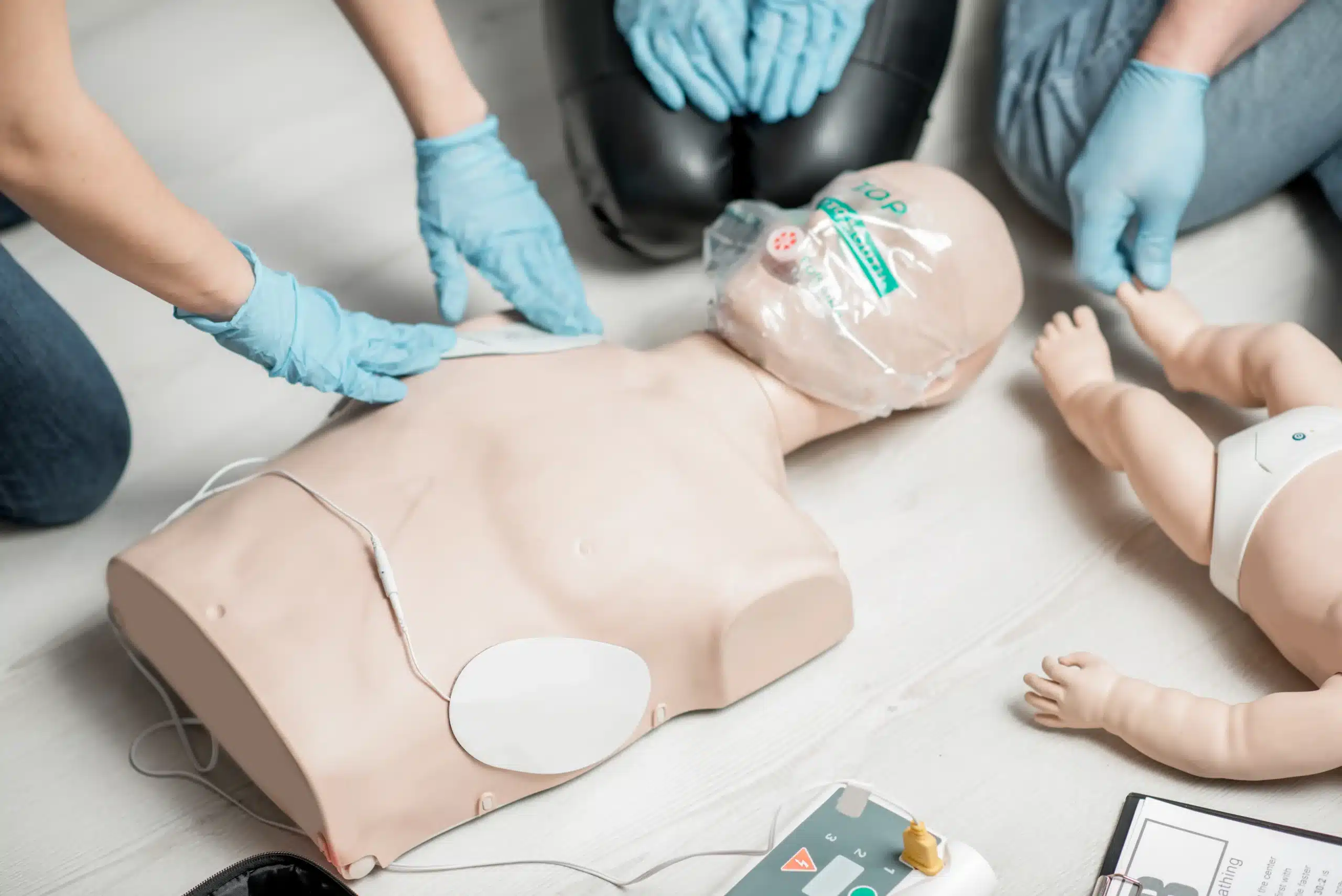In a medical emergency, seconds can matter. Knowing first aid can give you the confidence to act quickly and potentially save a life. If you’ve been searching for “first-aid classes near me,” this comprehensive guide will help you find the perfect course and equip you with essential life-saving skills. We’ll cover everything from basic first aid and CPR to specialized courses like pediatric and wilderness first aid. We’ll also discuss how to choose a reputable training provider, what to expect in class, and how to maintain your certification. Get ready to become a more confident and prepared individual.
Key Takeaways
- First-aid skills are essential for everyone: Knowing how to respond to medical emergencies empowers you to provide immediate care in various situations, from minor injuries to life-threatening events.
- Find the right training program: Consider factors like your schedule, learning style, and specific needs when choosing between online, in-person, or blended learning formats. Look for reputable providers offering certification from recognized organizations.
- Stay up-to-date: Maintain your certification and refresh your skills regularly to ensure you’re prepared to handle emergencies effectively. Continuing education and periodic refreshers will keep your knowledge current and your responses confident.
What are First-Aid Classes?
First-aid classes equip you with the skills to handle medical emergencies until professional help arrives. Different courses cater to various needs and skill levels. Let’s explore some common options:
Basic First Aid
Basic first-aid training provides fundamental skills applicable in various settings. These courses cover essential techniques like treating minor wounds, burns, sprains, and recognizing the signs of a medical emergency. They’re helpful for anyone who wants to be prepared for everyday mishaps, from a scraped knee to a more serious incident. This training is valuable for employees, managers, and even bystanders. Many workplaces encourage basic first aid training to create a safer environment.
CPR and AED Training
CPR (cardiopulmonary resuscitation) and AED (automated external defibrillator) training teaches you how to respond to life-threatening situations like cardiac arrest. You’ll learn to perform chest compressions, rescue breaths, and use an AED. CPR certification is often a requirement for healthcare professionals, but it’s a valuable skill for anyone. Some CPR courses, like the American Heart Association’s Hybrid Childcare Class, offer blended learning with online and in-person components. This blended format offers flexibility for busy schedules.
Specialized First-Aid Courses
Beyond basic and CPR/AED training, specialized first-aid courses address specific needs and environments. For example, pediatric first aid focuses on caring for infants and children, covering age-specific considerations and common childhood injuries. Wilderness first aid teaches you to handle medical emergencies in remote locations with potentially delayed professional help. These specialized courses are crucial for childcare providers, outdoor enthusiasts, and anyone working in unique or high-risk environments. Resources like ChildCareEd highlight the benefits of specialized training, especially for those caring for children, emphasizing the importance of training tailored to specific settings. You can find more information on wilderness first-aid courses from reputable organizations like NOLS.
Find Reputable First-Aid Training
Finding the right first-aid training provider is key to getting high-quality instruction. It’s worth taking a little extra time to make sure you’re learning effective, reliable, and up-to-date life-saving techniques. Here’s how to find a reputable training program:
Check Certifications and Affiliations
Start by checking a provider’s certifications and affiliations. Look for nationally recognized organizations like the American Heart Association or the American Red Cross. These organizations have rigorous standards, so their certification acts as a stamp of approval. Also, see if the training center is licensed by your state or local health department. This ensures they meet specific requirements for training and instruction. For example, Safety Training Seminars is an American Heart Association Training Center offering a range of courses, including BLS, ACLS, and PALS, in over 60 cities, including our main location in Modesto, CA. We also offer discount group classes and a low price guarantee.
Read Reviews and Testimonials
Once you’ve narrowed down your options, look at reviews and testimonials. Past students can offer valuable insights into the quality of instruction, the learning environment, and the overall experience. Sites like Yelp, Google Reviews, and even the training center’s website can be good resources. Reading reviews can give you a feel for the program and help you decide if it’s a good fit.
Verify Instructor Qualifications
Don’t hesitate to ask about instructor qualifications. Instructors should be certified and have relevant experience in first aid and emergency response. Ideally, they should also have experience teaching and a passion for sharing their knowledge. A qualified instructor can make all the difference in your learning experience. You can often find instructor bios on the training center’s website, which can give you an idea of their background and expertise.
Use Online Resources
Finally, use online resources to your advantage. Websites like CPR Certification Now offer helpful articles on selecting a quality first-aid training provider. You can also check with your local health department or community centers for recommendations. A little online research can go a long way in finding a reputable program that meets your needs.
What Happens in a First-Aid Class?
Curious about what goes on in a first-aid class? Here’s a preview of what you can expect, from the time commitment involved to the skills you’ll gain.
Time Commitment
First-aid courses are designed to fit various schedules. The length of your class will depend on the content covered. Basic first-aid certification can often be completed in a single day, typically ranging from a few hours to a full day. More comprehensive courses, such as those including CPR and AED training, might require additional time. Check with your chosen training center for specific course durations.
Skills Learned
You’ll learn essential life-saving techniques, starting with how to assess an emergency situation and prioritize care. A major focus of first-aid training is CPR (cardiopulmonary resuscitation), a critical skill used when someone’s heart stops or they stop breathing. You’ll also learn how to control bleeding, manage shock, care for burns, and handle other common medical emergencies. These skills empower you to respond effectively in a crisis.
Hands-on Practice
First-aid classes aren’t just lectures. Expect a significant portion of your class to involve hands-on practice. You’ll work with training equipment like mannequins and bandages to simulate real-life scenarios. This hands-on training is crucial for building muscle memory and confidence in your abilities, ensuring you can apply your knowledge under pressure.
Certification
Upon successful completion of your first-aid course, you’ll receive certification. This certification is typically valid for two years, demonstrating your competence in providing first-aid care. Remember that renewal courses are readily available to keep your skills sharp and your certification current. Check with organizations like the American Red Cross or your local training center for renewal options.
How Much Do First-Aid Classes Cost?
Knowing the cost of first-aid training is a practical first step. Prices depend on several factors, including the type of course, your location, and the training provider. Let’s break down the typical costs involved.
Average Prices
Generally, you can expect to pay anywhere from $75 to $150 for a basic first-aid course. More advanced courses, like those that include CPR/AED certification, will typically run a bit higher. Combination courses offering both first aid and CPR are often the most cost-effective option. Remember, the investment in training is small compared to the potential value of saving a life. Becoming certified can give you the confidence to act quickly and effectively in an emergency. For those seeking American Heart Association certifications, our BLS course is a great place to start.
Discounts and Free Options
It’s always a good idea to check for discounts. Some organizations, like the American Red Cross, occasionally offer discounts on training supplies or even the courses themselves. You might find discounts for students, seniors, or groups. In some cases, free first-aid courses might be available through community programs or local health initiatives. It’s worth exploring these options to see if you qualify. For the best prices in your area, check out our low price guarantee.
Group and Corporate Rates
If you’re looking to train a group of people, such as your workplace or community organization, look into group or corporate rates. Many training providers offer discounted pricing for larger groups. Sometimes, they can even bring the training to your location, which is convenient and can further reduce costs. On-site training is often the most efficient way to certify a team, minimizing disruption to work schedules. Contact providers directly to discuss your specific needs and negotiate the best price. Our team at Safety Training Seminars is always happy to help you find a solution that fits your budget. We offer excellent group discounts to make training accessible for everyone.
Online vs. In-Person First-Aid Training
Deciding between online and in-person first-aid training depends on your learning style, schedule, and budget. Both options offer valuable skills, but understanding their differences can help you make the best choice.
Pros and Cons
Online first-aid training offers flexibility. You can learn at your own pace and revisit materials as needed. It’s often more affordable and easier to fit into a busy schedule. However, online courses may lack the hands-on practice crucial for mastering essential first-aid skills. Some online programs may also present challenges for those who prefer a structured learning environment or have limited access to technology. In-person training, like what we offer at Safety Training Seminars, provides direct interaction with instructors and classmates, creating opportunities for real-time feedback and practice. This format allows for a deeper understanding of techniques and builds confidence in applying them.
Effectiveness and Certification
Both online and in-person first-aid training can be effective, especially when combined with ongoing practice and periodic refreshers. Studies show that knowledge retention is similar regardless of the initial training format. However, choosing a reputable training provider is key to receiving high-quality instruction and a valid certification. Look for providers accredited by recognized organizations like the American Heart Association. Our certification courses meet these standards, ensuring you receive comprehensive and up-to-date training. Regularly refreshing your skills is important for maintaining proficiency in emergency care.
Choose the Right Option
The best option for you depends on your individual needs and preferences. If you value hands-on learning and thrive in a structured environment, in-person training might be a better fit. If you need flexibility and prefer self-paced learning, an online course could be more suitable. When selecting a provider, check their certifications and affiliations to ensure they meet industry standards. Reading reviews and testimonials can also offer valuable insights into the quality of instruction and overall learning experience. For those in Modesto, Turlock, and Manteca, Safety Training Seminars offers a range of courses with a low-price guarantee, making quality first-aid training accessible to everyone. We also offer discounts for group classes, making it a cost-effective option for businesses and community organizations.
Prepare for Your First-Aid Class
So, you’ve signed up for a first-aid class—fantastic! Here’s how to prepare and make the most of your training. A little preparation goes a long way.
Required Materials
Most first-aid courses provide the necessary training materials. This often includes a student manual, bandages, gloves, and other practice supplies. Check with your chosen training center—like Safety Training Seminars—to confirm what they provide and if there’s anything you need to bring. You might want to bring a notebook and pen to jot down extra notes.
Pre-Course Study
While pre-course study isn’t usually mandatory for basic first-aid certification, familiarizing yourself with the topics beforehand can be helpful. A quick overview of basic first aid can refresh your memory and make the in-class learning experience more efficient. This is especially useful if it’s been a while since your last first-aid course. Look for reputable sources like the American Heart Association or the Red Cross for reliable information. Checking your instructor’s credentials is also a good idea. CPR Certification Now suggests ensuring your instructors have relevant experience and expertise in first aid and emergency response.
What to Wear and Bring
Comfort is key! Wear loose, comfortable clothing that allows for a full range of motion. You’ll be practicing techniques like CPR and bandaging, so avoid restrictive outfits. Comfortable shoes are important, too. Bring a small bag or backpack for your personal belongings, any required materials, and your notebook. A water bottle is always a good idea, especially during longer training sessions. And don’t forget your enthusiasm! You’re about to learn valuable, potentially life-saving skills.
Maintain Your First-Aid Certification
Once you’ve earned your first-aid certification, staying current is key. Medicine changes, and refreshing your skills ensures you’re prepared to handle emergencies effectively.
Renewal Requirements
First-aid certifications typically expire every two years. Check your certificate for the exact expiration date. Renewal involves taking a refresher course that covers core skills and any updated guidelines. These renewal classes are shorter than the initial certification course, designed to keep your knowledge sharp. Plan to register for your renewal a few months before your certification expires to avoid a lapse.
Continuing Education
Even between renewals, it’s smart to stay updated on advancements in first aid. Medical knowledge evolves, and best practices change. Consider subscribing to industry newsletters, attending workshops, or taking supplemental online courses. A study published by the National Library of Medicine highlighted the importance of periodic refreshers. Staying informed strengthens your skills and boosts your confidence in responding to emergencies.
Stay Updated
The world of first aid is constantly evolving, with new techniques, technologies, and guidelines emerging regularly. To provide truly effective care, commit to ongoing learning. Follow reputable organizations like the Red Cross, which emphasizes continuous improvement in first aid. By actively seeking updates, you’ll be prepared to deliver the best possible care.
First-Aid Training in Modesto, CA
Finding the right first-aid training program is easy when you know where to look. Several respected organizations offer comprehensive courses in and around Modesto.
Safety Training Seminars
Safety Training Seminars is an American Heart Association Training Center offering a range of CPR and first-aid certification courses in Modesto, CA. They provide everything from basic first aid to BLS, ACLS, and PALS certification for healthcare providers. They’re committed to keeping prices low and offer discounts for groups. Serving Modesto, Turlock, and Manteca, they make it convenient to find a class near you. They also have a low price guarantee.
American Red Cross
The American Red Cross also provides comprehensive CPR and first-aid training in various formats. They offer in-person classes, online learning, and blended learning options to fit different learning styles and schedules. Red Cross certifications are typically valid for two years, and they offer convenient renewal options.
National Safety Council
For those focused on workplace safety, the National Safety Council offers specialized first-aid and CPR training. They have courses like Pediatric First Aid, CPR, and AED training designed for childcare providers and educators.
Local Options
Beyond these established organizations, you can often find first-aid training through local resources. Check with community centers, hospitals, and educational institutions in Modesto. These organizations frequently offer courses tailored to the specific needs of the community.
Why Learn First Aid?
Knowing first aid can make a real difference in critical situations. It empowers you to act quickly and effectively when someone is injured or experiencing a medical emergency. Whether it’s a minor cut or a life-threatening situation, having first-aid skills can help prevent a bad situation from becoming worse. Plus, it’s a valuable skill to have anywhere, from the workplace to your own home.
Life-Saving Skills
First aid equips you with the ability to administer immediate care during emergencies. Learning techniques like CPR can help you save a life when every second counts. As the NYC Health department points out, CPR is essential when someone’s breathing or heart stops. It involves chest compressions and sometimes rescue breaths, providing vital support until professional medical help arrives. Having these skills can dramatically increase the chances of survival in critical situations. Even basic first aid knowledge can help stabilize an injured person and prevent further harm.
Confidence in Emergencies
Beyond the practical skills, first-aid training instills confidence. It empowers you to take charge in stressful situations and provide assistance without panicking. Knowing what to do can help you stay calm and focused, allowing you to think clearly and make informed decisions under pressure. This confidence can be invaluable, not only for yourself but also for those around you. As ChildCareEd highlights, pediatric first aid and CPR training gives childcare providers the confidence to create a safe environment for the children they care for. This sense of preparedness can extend to any situation where first aid is needed.
Workplace and Community Safety
First-aid training is a valuable asset in both professional and community settings. Many workplaces require or encourage employees to have first-aid certifications. This is especially true in industries with higher risks of accidents or injuries. Having trained first-aiders on-site can significantly improve workplace safety and response times in emergencies. The National Safety Council offers various first aid and CPR training resources, emphasizing the importance of these skills for safer environments. In your community, knowing first aid can help you respond to accidents, injuries, and medical emergencies, making your neighborhood a safer place for everyone.
Related Articles
- First-Aid Training in Modesto: Your Complete Guide – Modesto CPR Classes
- CPR Training in Modesto: Your Complete Guide – Modesto CPR Classes
- First Aid Courses in Modesto: Your Complete Guide – Modesto CPR Classes
- First-Aid Training in Manteca: A Complete Guide – Modesto CPR Classes
- Online PALS Classes in Modesto: Your Guide – Modesto CPR Classes
Frequently Asked Questions
What’s the difference between basic first aid and CPR training? Basic first aid focuses on treating common injuries like cuts, burns, and sprains. CPR training teaches you how to respond to life-threatening situations like cardiac arrest, where someone’s heart stops beating. While distinct, these skills often complement each other, and many courses combine both.
How long does it take to get first-aid certified? The time commitment varies depending on the course content. Basic first aid can often be completed in a single day, while more comprehensive courses, including CPR/AED training, may require a longer time commitment. Check with your chosen training provider for specific course durations.
How much do first-aid classes typically cost? Costs range from $75 to $150 for basic first aid, with more advanced courses, like CPR/AED, potentially costing more. Combination courses often offer the best value. Look for discounts for students, seniors, groups, or corporate rates. Free courses may be available through community programs.
Is online first-aid training as effective as in-person training? Both online and in-person training can be effective, especially when combined with regular practice. Online offers flexibility and affordability, while in-person provides hands-on practice and direct interaction with instructors. Choose the format that best suits your learning style and schedule. Ensure your chosen provider is reputable and accredited by a recognized organization.
How do I maintain my first-aid certification after completing a course? Most certifications are valid for two years. Renew your certification by taking a refresher course before it expires. Stay up-to-date with advancements in first aid through newsletters, workshops, or supplemental online courses. Continuous learning ensures you’re always prepared to provide effective care.

